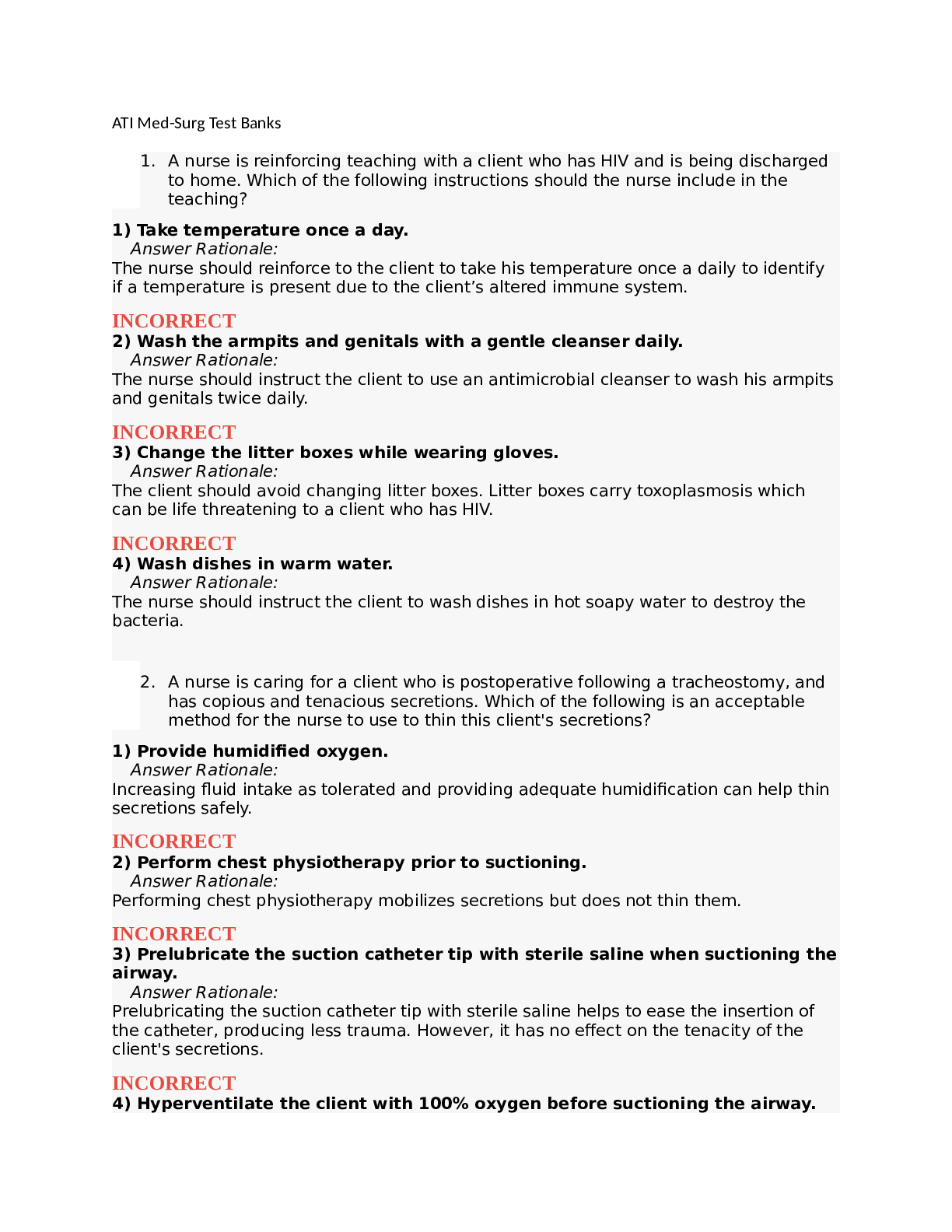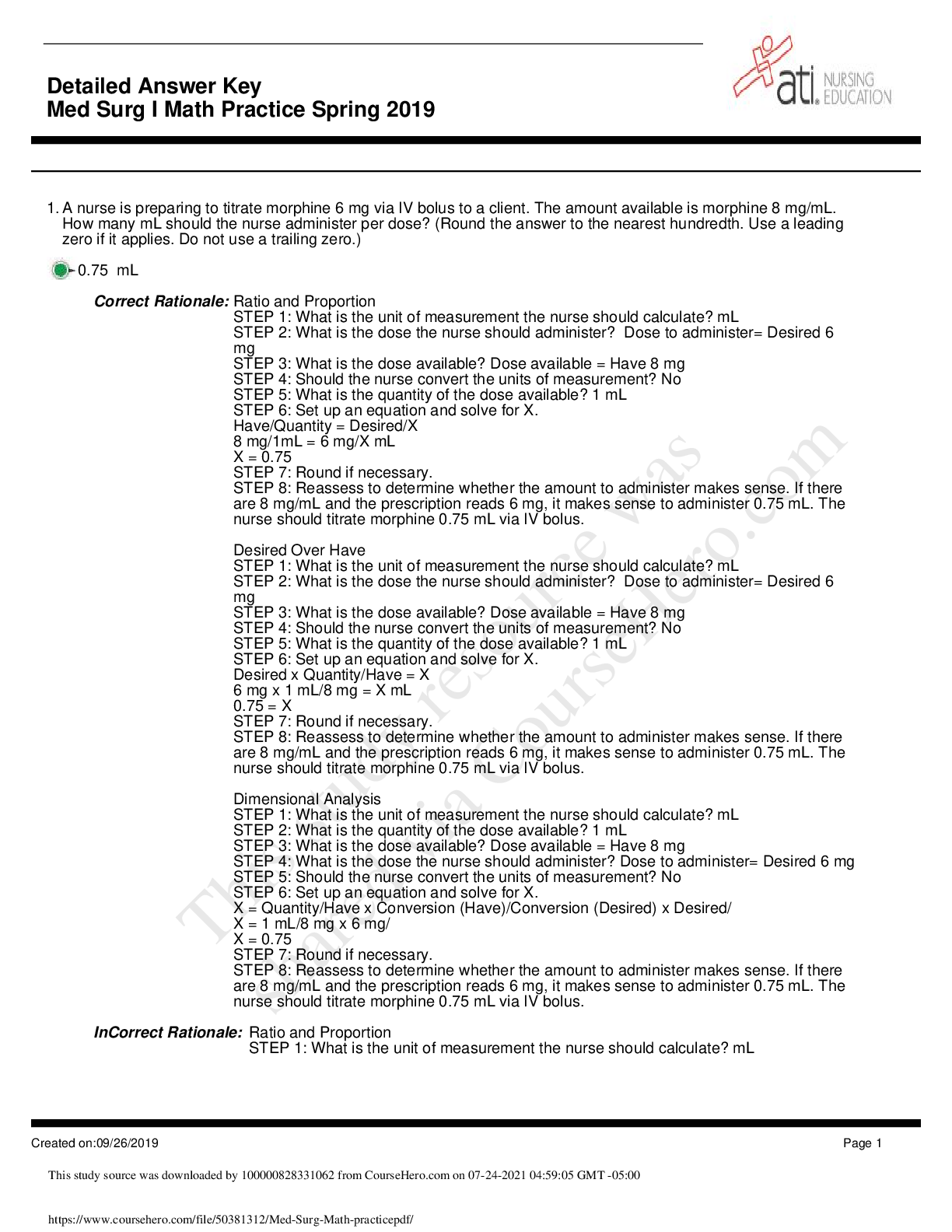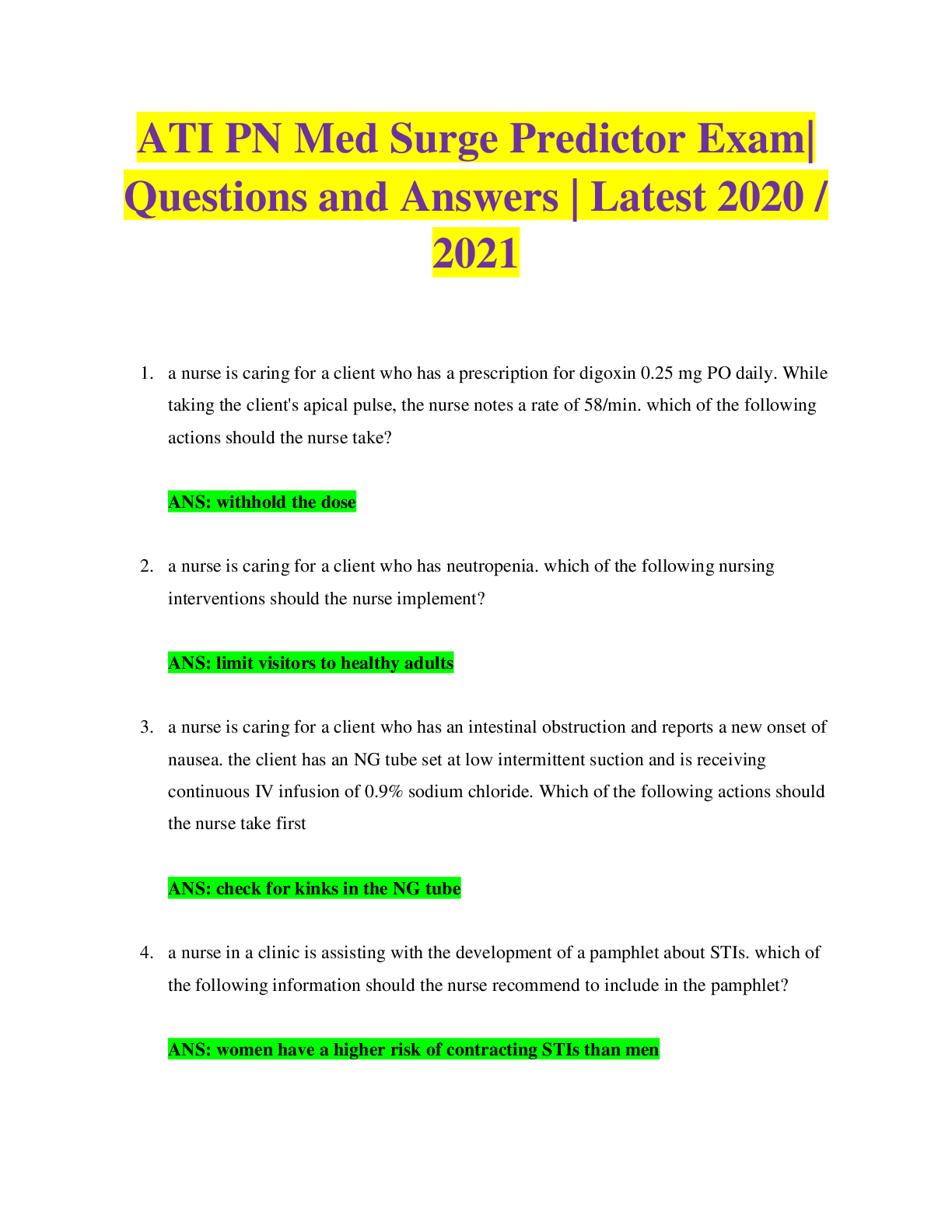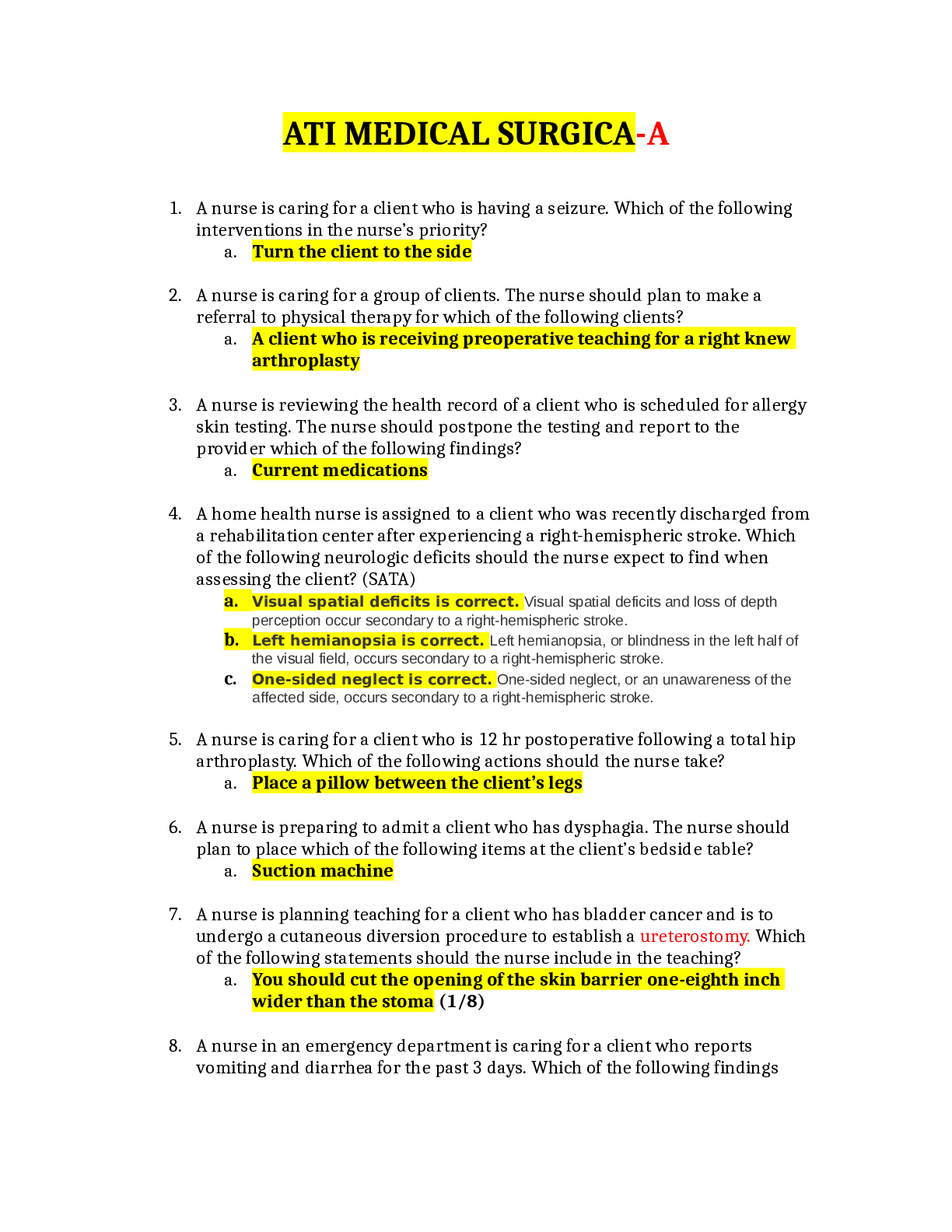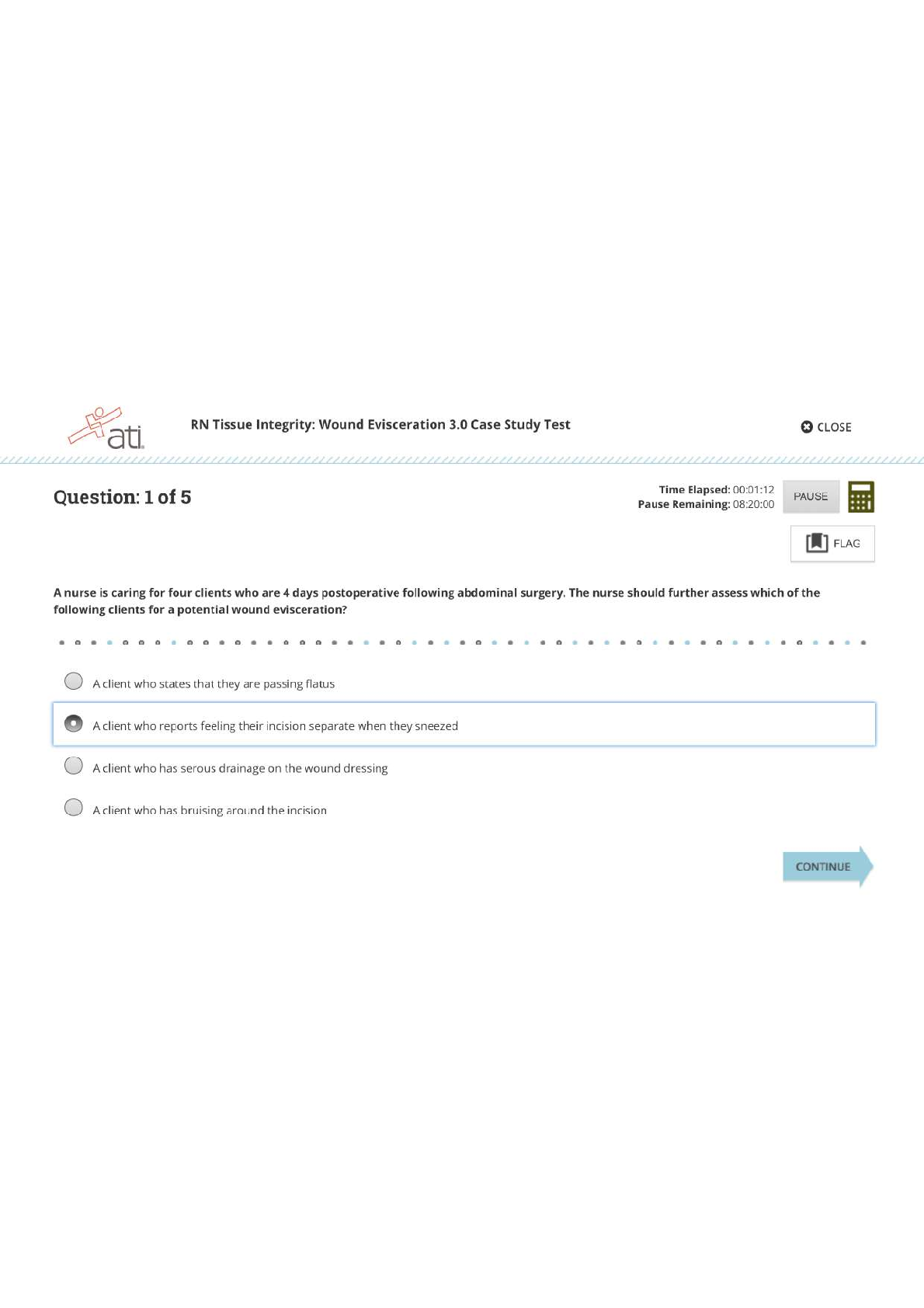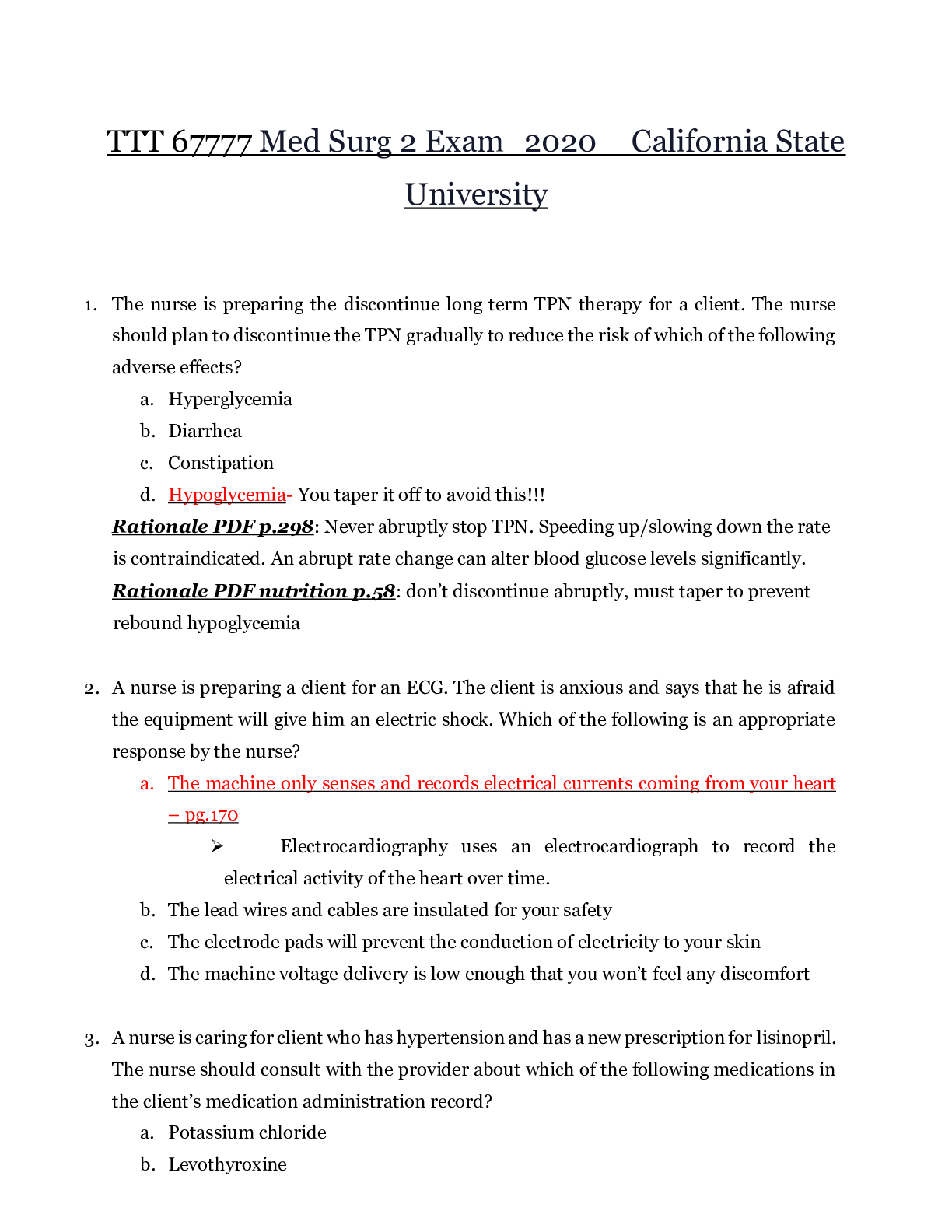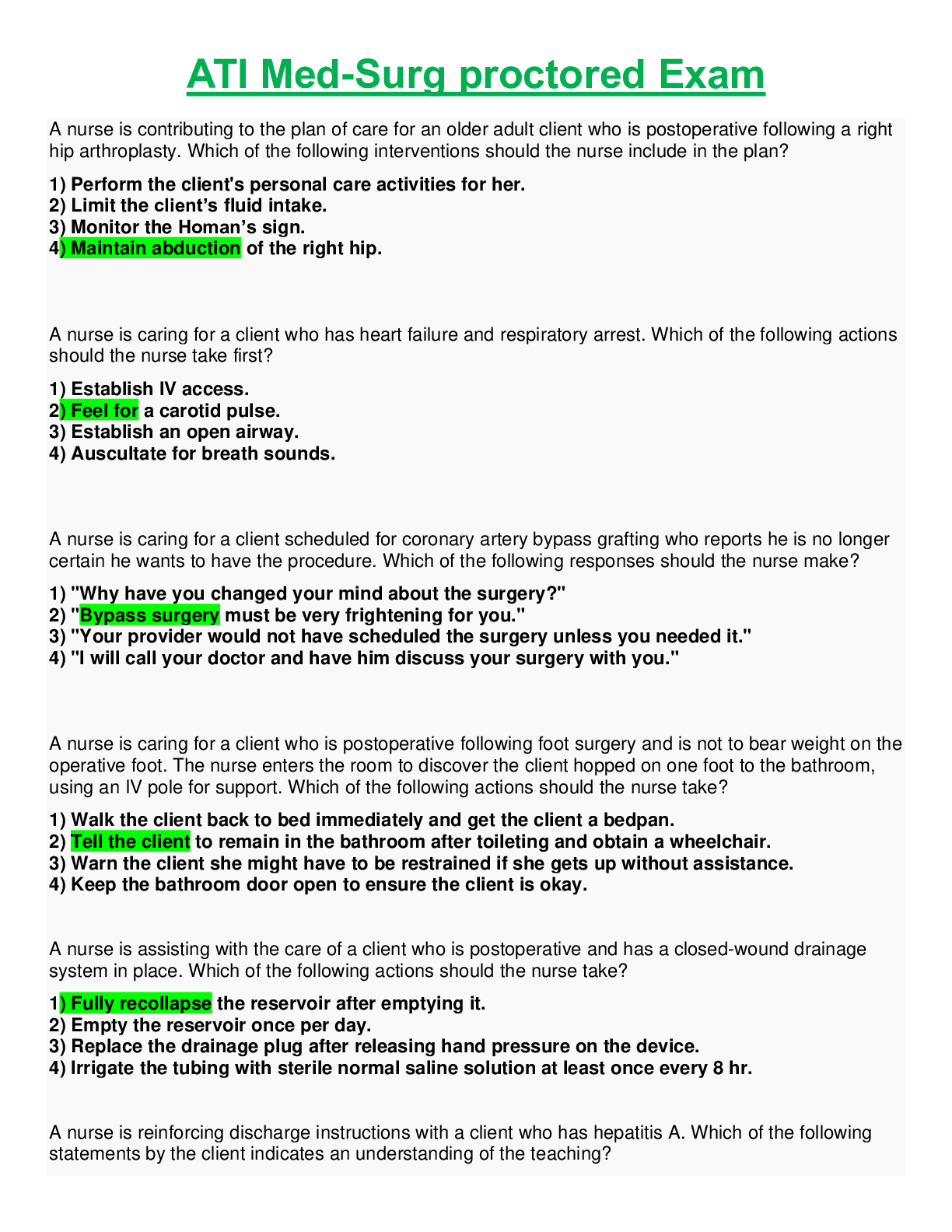*NURSING > ATI MEDICAL SURGICAL > NUR 2488 ATI RN Mental Health Nursing Exam with Answers & Rationale GRADED A (All)
NUR 2488 ATI RN Mental Health Nursing Exam with Answers & Rationale GRADED A
Document Content and Description Below
1. A nurse assesses a client at a community mental health facility using the SAD PERSONS tool. The nurse knows that this tool provides which of the following data related to a client? A. Current anxi... ety level B. Problem-solving ability C. Suicide potential D. Mood disturbance A nurse is assisting the parents of a school-age child who has oppositional defiant disorder in identifying strategies to promote positive behavior. Which of the following is an appropriate strategy for the nurse to recommend? (Select all that apply.) A. Allow the child to choose consequences for negative behavior. B. Use role playing to act out unacceptable behavior. C. Develop a reward system for acceptable behavior. D. Encourage the child to participate in school sports. E. Be consistent when addressing unacceptable behavior. 2. A nurse manager is discussing the care of a client who has a personality disorder with a newly licensed nurse. Which of the following statements by the newly licensed nurse indicates a need for further teaching? A."I can promote my client's sense of control by establishing a schedule." B. "Self-assessment will help me cope with emotional reactions to client care." C."I should practice limit-setting to help prevent client manipulation." D. "Maintaining professional boundaries is a priority of client care." 3. A client says, "I plan to commit suicide." Which of the following should be the nurse's priority assessment? A. Client's educational and economic background B. Lethality of the method and availability of means C. Quality of the client's social support D. Client's insight into the reasons for the decision 4. A nurse is caring for a client who has avoidant personality disorder. Which of the following statements is expected from a client who has this type of personality disorder? A. "I'm scared that you're going to leave me." B. "I'll go to group therapy if you'll let me smoke." C."I need to feel that everyone admires me." D."I sometimes feel better if I cut myself." 5. A nurse is discussing free association as a therapeutic tool with a client who has major depressive disorder. Which of the following client statements indicates understanding of this technique? A. "I will write down my dreams as soon as I wake up." B. "I may begin to associate my therapists with important people in my life." C. "I can learn to express myself in a nonaggressive manner." D. "This therapy will address my conscious feelings about stressful experiences." 6. A nurse is performing an admission assessment on an adolescent client who has depression. Which of the following is an expected finding? (Select all that apply.) A. Fear of being alone B. Substance use C. Weight gain D. Irritability E. Aggressiveness 7. A charge nurse is preparing a staff education session on personality disorders. Which of the following should be included as personality characteristics associated with all of the personality disorders? (Select all that apply.) A. Difficulty in getting along with other members of a group B. Belief in the ability to become invisible during times of stress C. Display of defense mechanisms when routines are changed D. Claiming to be more important than other persons E. Difficulty understanding why it is inappropriate to have a personal relationship with staff 8. A nurse is assessing a client who is suicidal. Which of the following is appropriate for the nurse to ask the client? (Select all that apply.) A. Do you have a plan? B. Have you thought about hurting yourself? C. Do you feel that life is not worth living? D. Why do you want to commit suicide? E. Have you experienced a recent change in your mood? 9. A nurse working in a pediatric clinic is caring for a preschool-age child who has a new diagnosis of ADHD. When teaching the parent about this disorder, which of the following statements should the nurse include in the teaching? A. "Behaviors associated with ADHD must be present prior to age 3." B. "This disorder is characterized by argumentativeness." C. "Below-average intellectual functioning is associated with ADHD." D. "Because of this disorder, your child is at an increased risk for injury." 10. A nurse is caring for a client who has borderline personality disorder. The client says, "The nurse on the evening shift is always nice! You are the meanest nurse ever!" The nurse should recognize the client's statement as an example of which of the following defense mechanisms? A. Regression B. Splitting C. Undoing D. Identification 11. A nurse is caring for a client who is on suicide precautions. Which of the following interventions should the nurse include in the plan of care? A. "Assign the client to a private room." B. "Document the client's behavior every hour." C. "Allow the client to keep perfume in her room." 12. A nurse is obtaining a health history from the parents of a 12-year-old client who has conduct disorder. Which of the following are expected findings? (Select all that apply.) A. Bullying of others B. Threats of suicide C. Law-breaking activities D. Narcissistic behavior E. Flat affect 13. A nurse is assessing a 4-year-old child for indications of autism spectrum disorder. For which of the following indications should the nurse assess? A. Impulsive behavior B. Repetitive counting C. Destructiveness D. Somatic problems 14. A nurse is assisting with a court-ordered evaluation of a client who has antisocial personality disorder. When assessing this client, which of the following are expected findings? (Select all that apply.) A. Demonstrates extreme anxiety when placed in a social situation B. Has difficulty making even simple decisions C. Attempts to convince other clients to give him their belongings D. Becomes agitated if his personal area is not neat and orderly E. Blames others for his past and current problems 15. A nurse is conducting a class for a group of newly licensed nurses on identifying risk factors for suicide. Which of the following individuals should the nurse include as having the highest risk for suicide? (Select all that apply.) A. Older adult females B. Adolescents C. Native Americans D. Clients who have a depressive disorder E. Clients who have hypomania 16. A charge nurse is conducting a class on therapeutic communication to a group of newly licensed nurses. Which of the following responses by the newly licensed nurse requires additional teaching regarding nonverbal communication? A. Personal space B. Posture C. Eye contact D. Intonation 17. A charge nurse is discussing mental status examinations with a newly licensed nurse. Which of the following statements by the newly licensed nurse indicates a need for further teaching? A. "To assess cognitive ability, I should ask the client to count backward by 7." B. "To assess affect, I should observe the client's facial expression." C. "To assess language ability, I should instruct the client to write a sentence." D. "To assess remote memory, I should have the client repeat a list of objects." 18. A charge nurse is discussing the care of a client who has major depressive disorder (MDD) with a newly licensed nurse. Which of the following statements by the newly licensed nurse indicates a need for further teaching? A. "Care during the continuation phase focuses on treating continued manifestations of MDD." B. "The goal of treatment during the maintenance phase is prevention of future episodes of MDD." C. "The client is at greatest risk for suicide during the first weeks of an MDD episode." D. "Medication and psychotherapy are used to prevent a relapse of MDD." 19. A charge nurse is discussing the characteristics of a nurse-client relationship with a newly licensed nurse. Which of the following are appropriate to include in the discussion? (SATA) A. The needs of both participants are met. B. An emotional commitment exists between the participants. C. It is goal-directed. D. Behavioral change is encouraged. E. A termination date is established. 20. A charge nurse is discussing transcranial magnetic stimulation (TMS) with a newly licensed nurse. Which of the following statements by the newly licensed nurse indicates a need for further teaching? A. "TMS is indicated for clients whose depression is not relieved by medication." B. "I will provide post-anesthesia care following TMS." C. "TMS is usually performed as an outpatient procedure." D. "I will schedule the client for daily TMS treatments for the first several weeks." 21. A client says she is experiencing increased stress because her significant other is "pressuring me and my kids to go live with him. I love him, but I'm not ready to do that." She also states that her significant other "keeps nagging at my oldest son, which makes me mad, since he's my son, not his." Which of the following should the nurse recommend to promote a change in the client's situation? A. Learn to practice mindfulness. B. Use assertiveness techniques. C. Exercise regularly. D. Rely on the support of a close friend. 22. A client tells a student nurse, "Don't tell anyone, but I hid a sharp knife under my mattress in order to protect myself from my roommate, who is always yelling at me and threatening me." Which of the following actions should the nurse take? A. Keep the client's communication confidential, but talk to the client daily, using therapeutic communication to convince him to admit to holding the knife. B. Keep the client's communication confidential, but watch the client and his roommate closely. C. Tell the client that this must be reported to health care staff because it concerns the health and safety of the client and others. D. Report the incident, but do not inform the client of the intention to do so. 23. A nurse decides to put a client who has psychosis in seclusion overnight because the unit is very short-staffed, and the client frequently fights with other clients. This is an example of: A. beneficence. B. a tort. C. a facility policy. D. justice. 24. A nurse hears a newly licensed nurse discussing a client's hallucinations in the hallway with another nurse. Which of the following actions should the nurse take first? A. Notify the nurse manager. B. Tell the nurse to stop discussing the behavior. C. Provide an in-service program about confidentiality. D. Complete an incident report. 25. A nurse in an acute mental health facility is caring for a client who has a severe mental illness and soon will be ready for discharge but still requires supervision much of the time. The client's wife works all day but is home by late afternoon. Which of the following should the nurse suggest as appropriate follow-up care? A. Receiving daily care from a home health aide. B. Having a weekly visit from a nurse case worker. C. Attending a partial hospitalization program. D. Visiting a community mental health center on a daily basis. 26. A nurse in an acute mental health facility is caring for a client who is experiencing a mixed episode of bipolar disorder. Which of the following is the priority nursing action? A. Set consistent limits for expected client behavior. B. Administer prescribed medications as scheduled. C. Provide the client with step-by-step instructions during hygiene activities. D. Monitor the client for escalating behavior. 27. A nurse in an outpatient mental health clinic is preparing to conduct an initial client interview. When conducting the interview, which of the following is the highest priority action? A. Respect the client's need for personal space. B. Identify the client's perception of her mental health status. C. Include the client's family in the interview. D. Teach the client about her current mental health disorder. 28. A nurse is assessing a client immediately following an electroconvulsive therapy (ECT) procedure. Which of the following are expected findings? (SATA) A. Hypotension B. Paralytic ileus C. Memory loss D. Nausea E. Tachycardia 29. A nurse is assisting with systematic desensitization for a client who has an extreme fear of elevators. Which of the following is appropriate when implementing this form of therapy? A. Demonstrate riding in an elevator, and then ask the client to imitate the behavior. B. Advise the client to say "stop" out loud every time he begins to feel an anxiety response related to an elevator. C. Gradually expose the client to an elevator while practicing relaxation techniques. D. Stay with the client in an elevator until his anxiety response diminishes. 30. A nurse is caring for a client in restraints. Which of the following statements are appropriate documentation? (SATA) A. " Client ate most of his breakfast." B. "Client was offered 8oz of water every hr." C. "Client shouted at assistive personnel." D. "Client received chlorpromazine (Thorazine) 15mg by mouth at 1000." E. "Client acted out after lunch." 31. A nurse is caring for a client on an acute mental health unit. The client reports hearing voices that are telling her to "kill your doctor." Which of the following is the priority action for the nurse to take? A. Use therapeutic communication to discuss the hallucination with the client. B. Initiate one-to-one observation of the client. C. Focus the client on reality. D. Notify the provider of the client's statement. 32. A nurse is caring for a client who has acute stress disorder and is experiencing severe anxiety. Which of the following statements by the nurse is appropriate? A "Tell me about how you are feeling right now." B. "You should focus on the positive things in your life to decrease your anxiety." C. "Why do you believe you are experiencing this anxiety?" D. "Let's discuss the medications your provider is prescribing to decrease your anxiety." [Show More]
Last updated: 1 year ago
Preview 1 out of 38 pages

Reviews( 0 )
Document information
Connected school, study & course
About the document
Uploaded On
Aug 15, 2021
Number of pages
38
Written in
Additional information
This document has been written for:
Uploaded
Aug 15, 2021
Downloads
0
Views
114
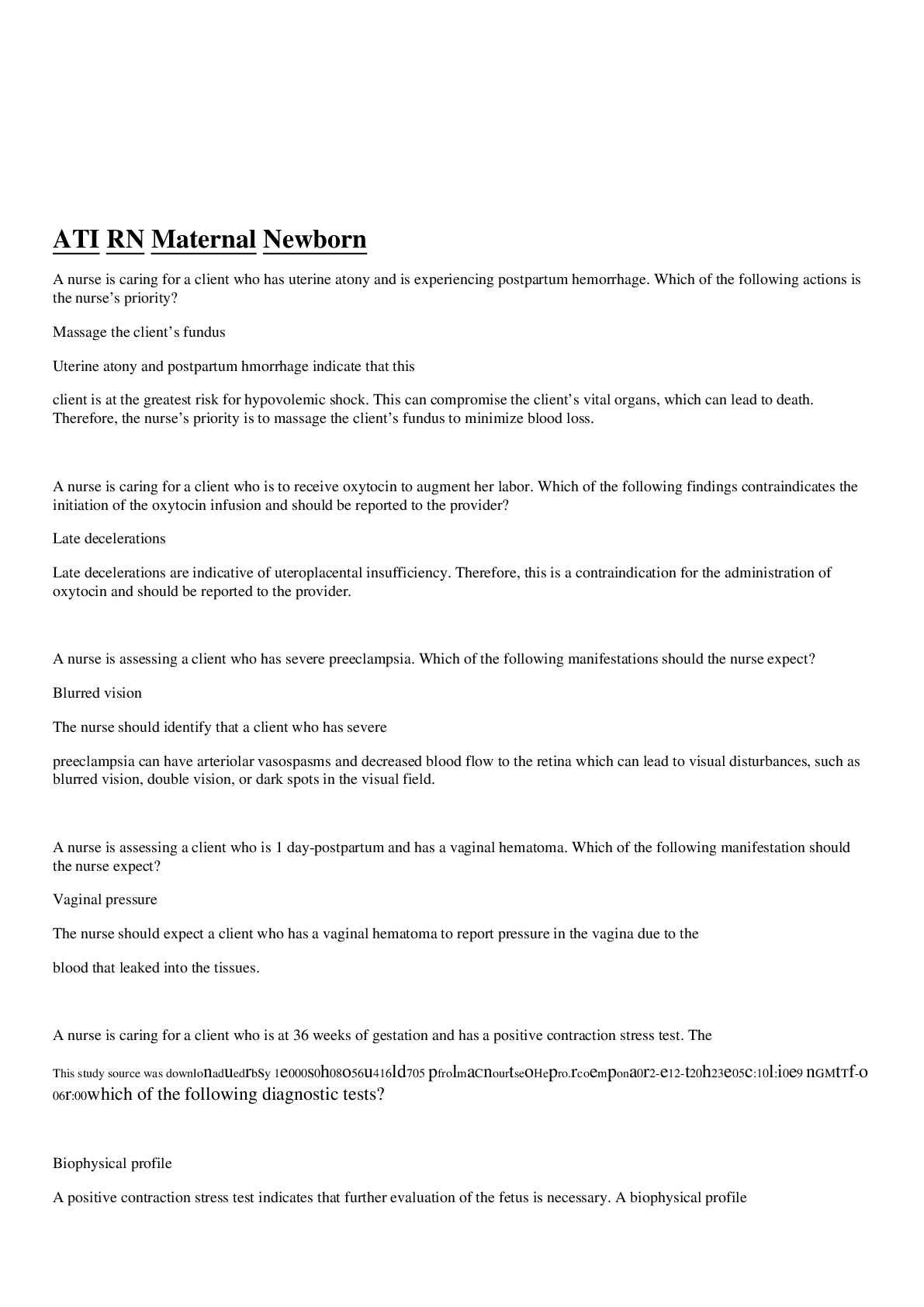

.png)
.png)
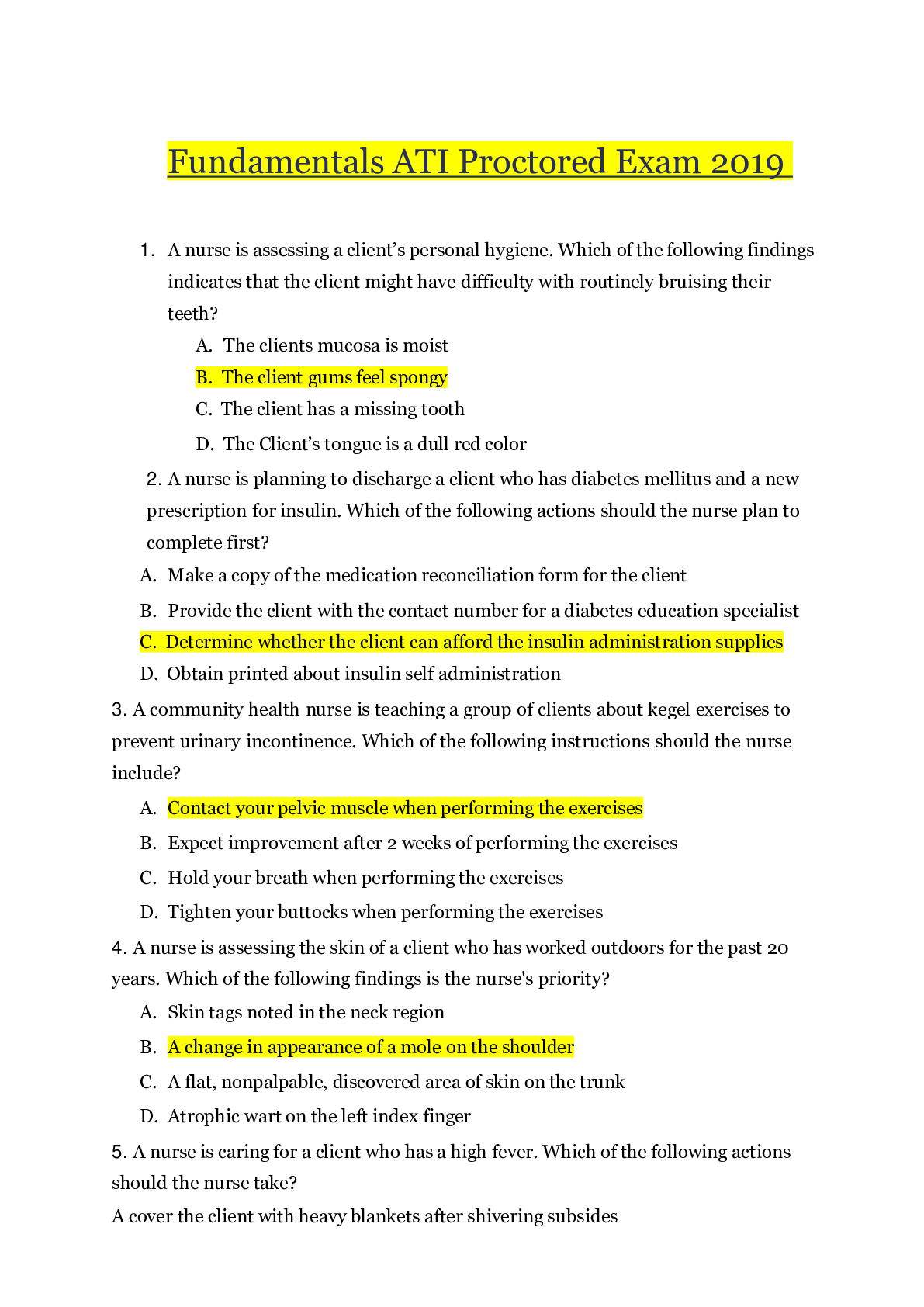



 Correct Answers, Download to Score A.png)

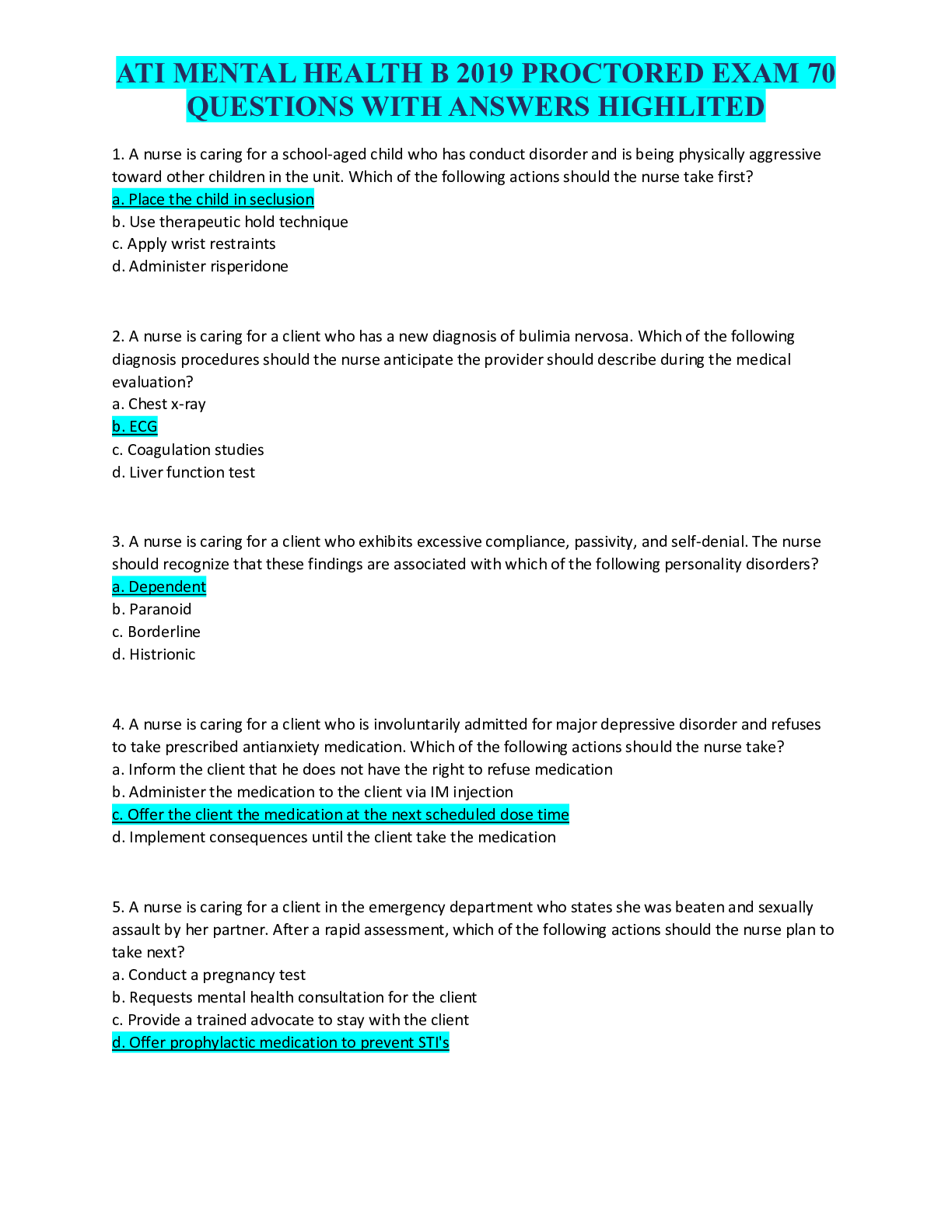
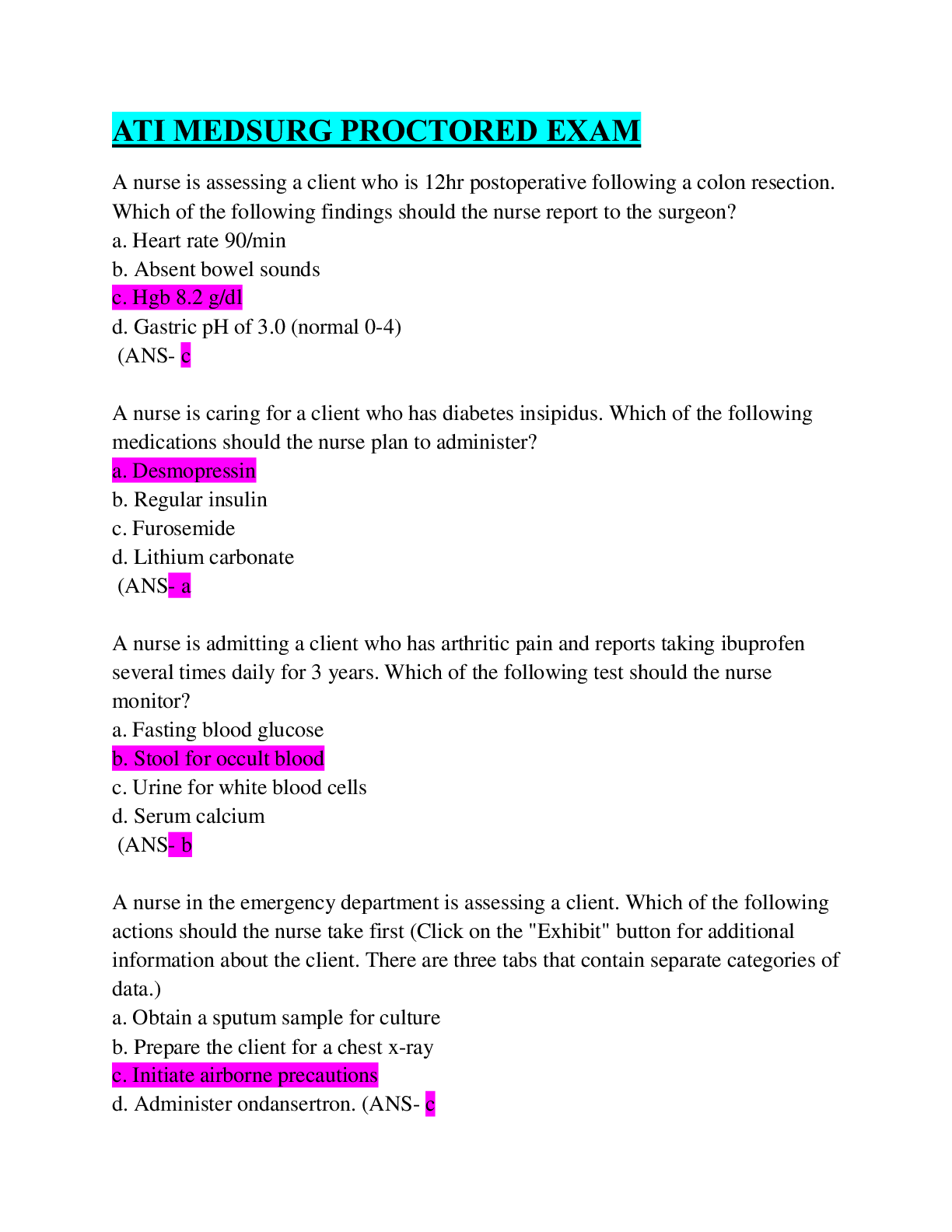

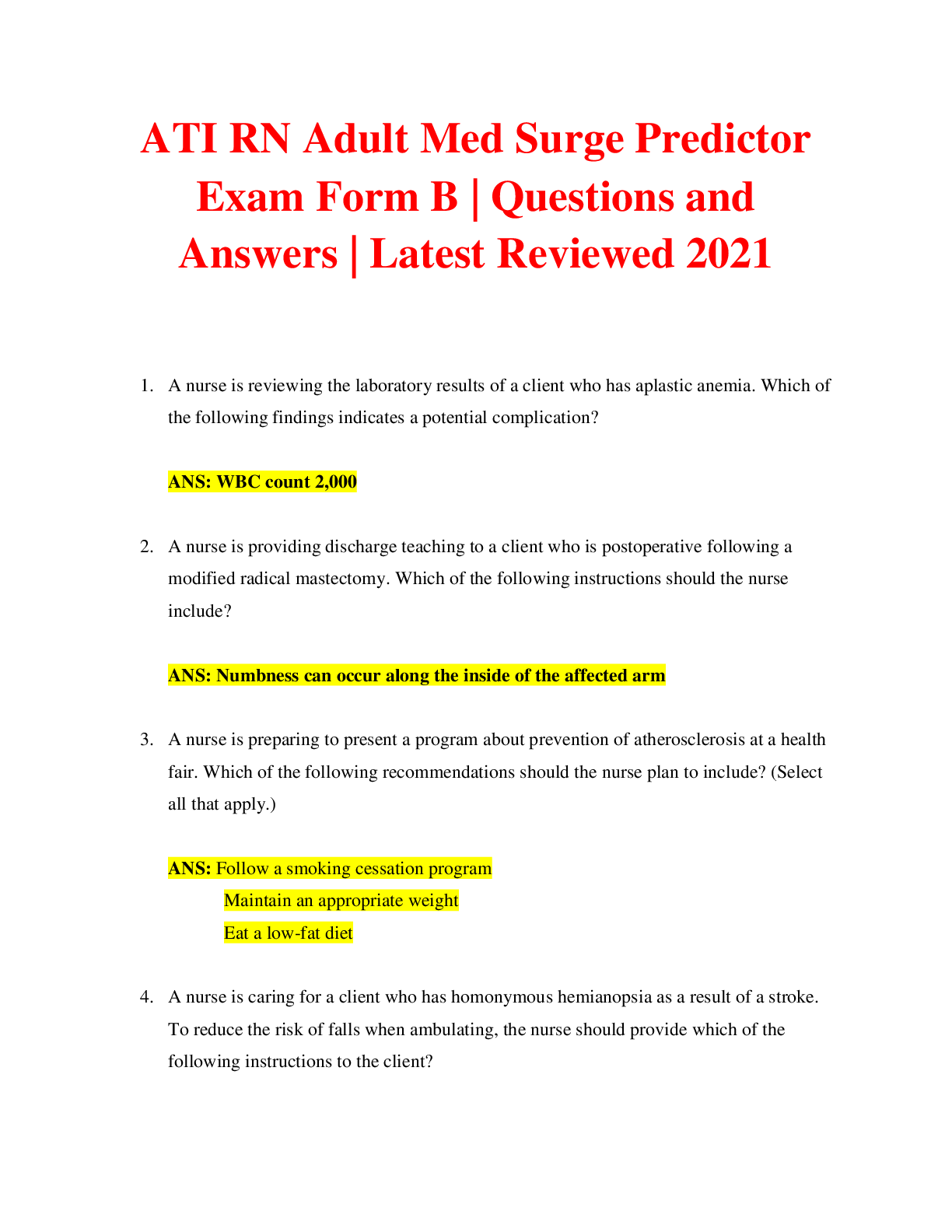
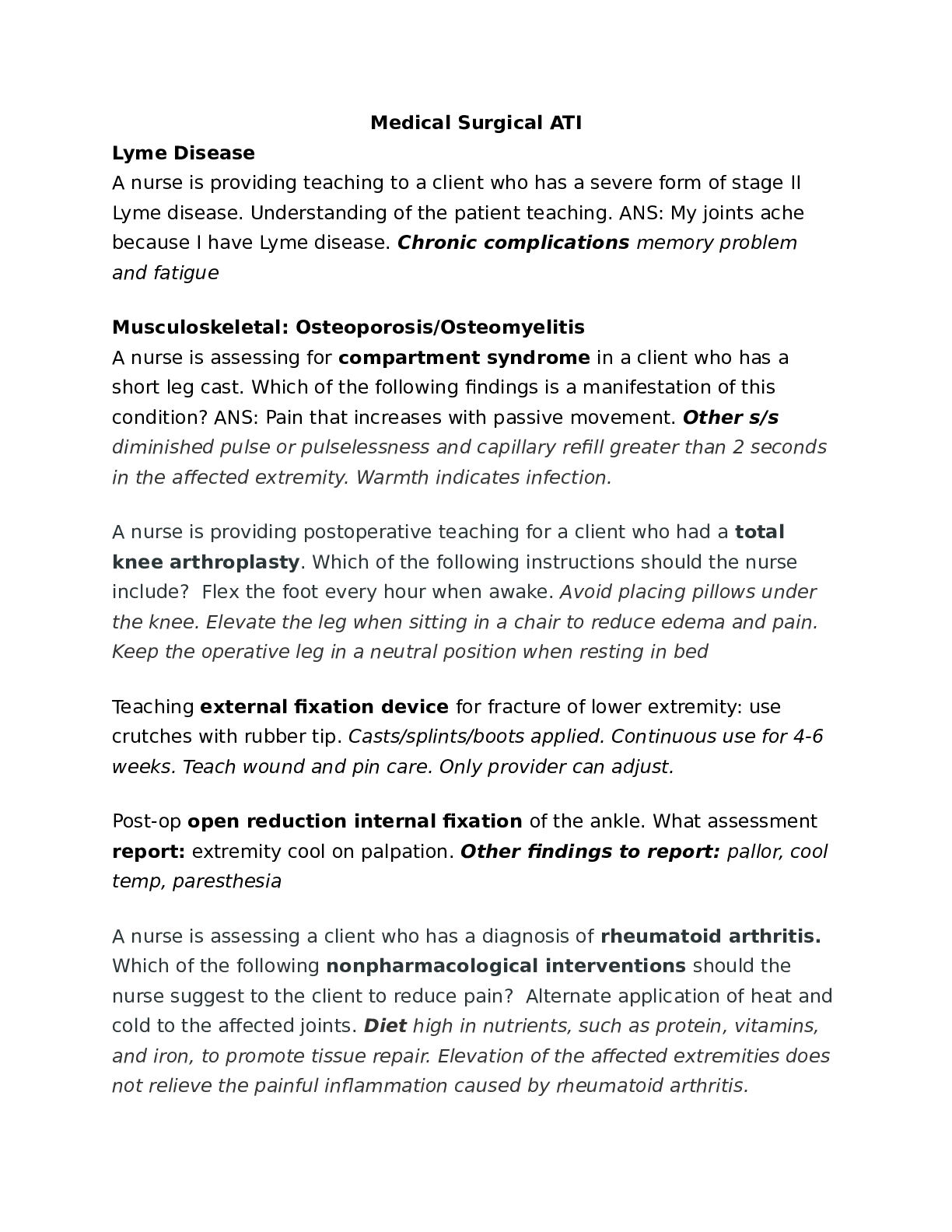
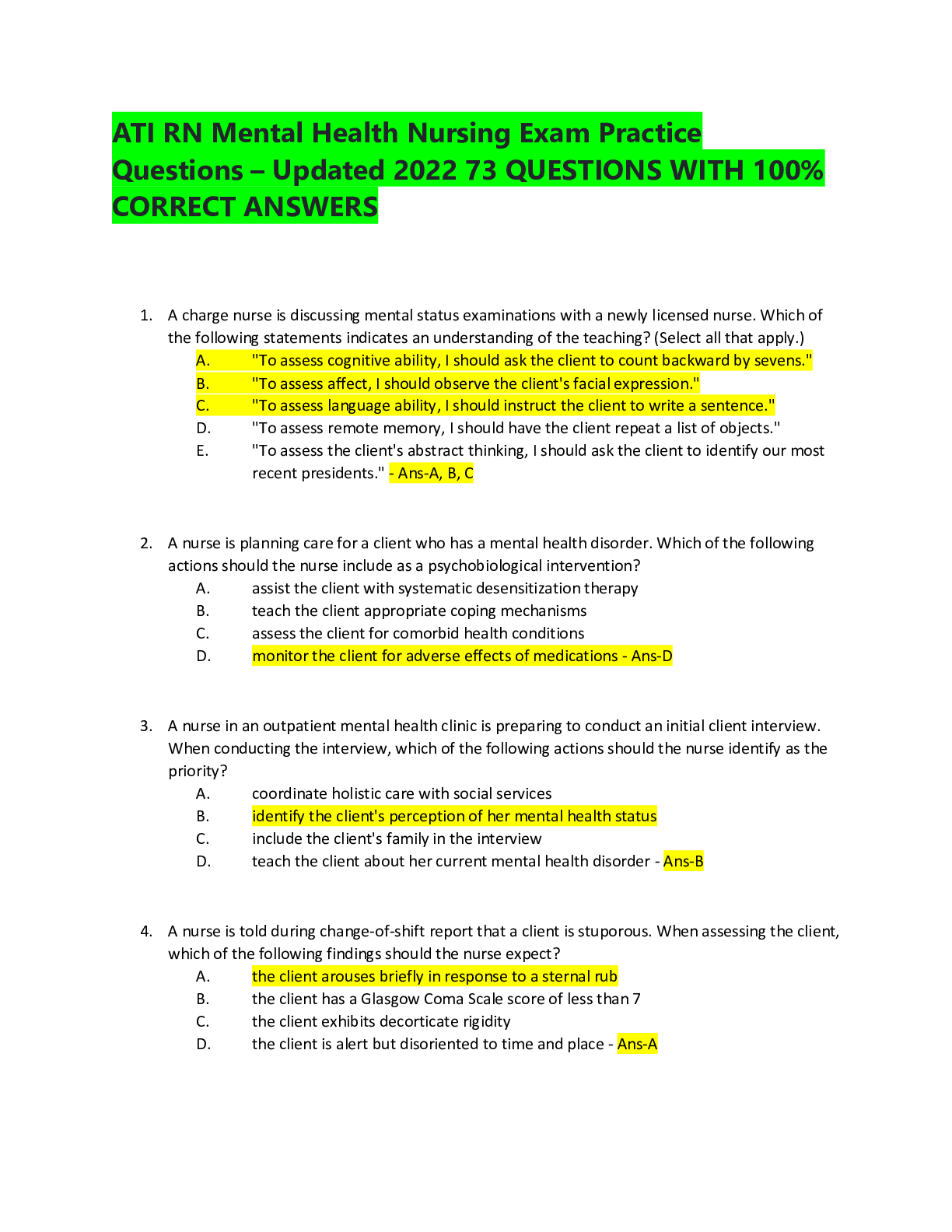
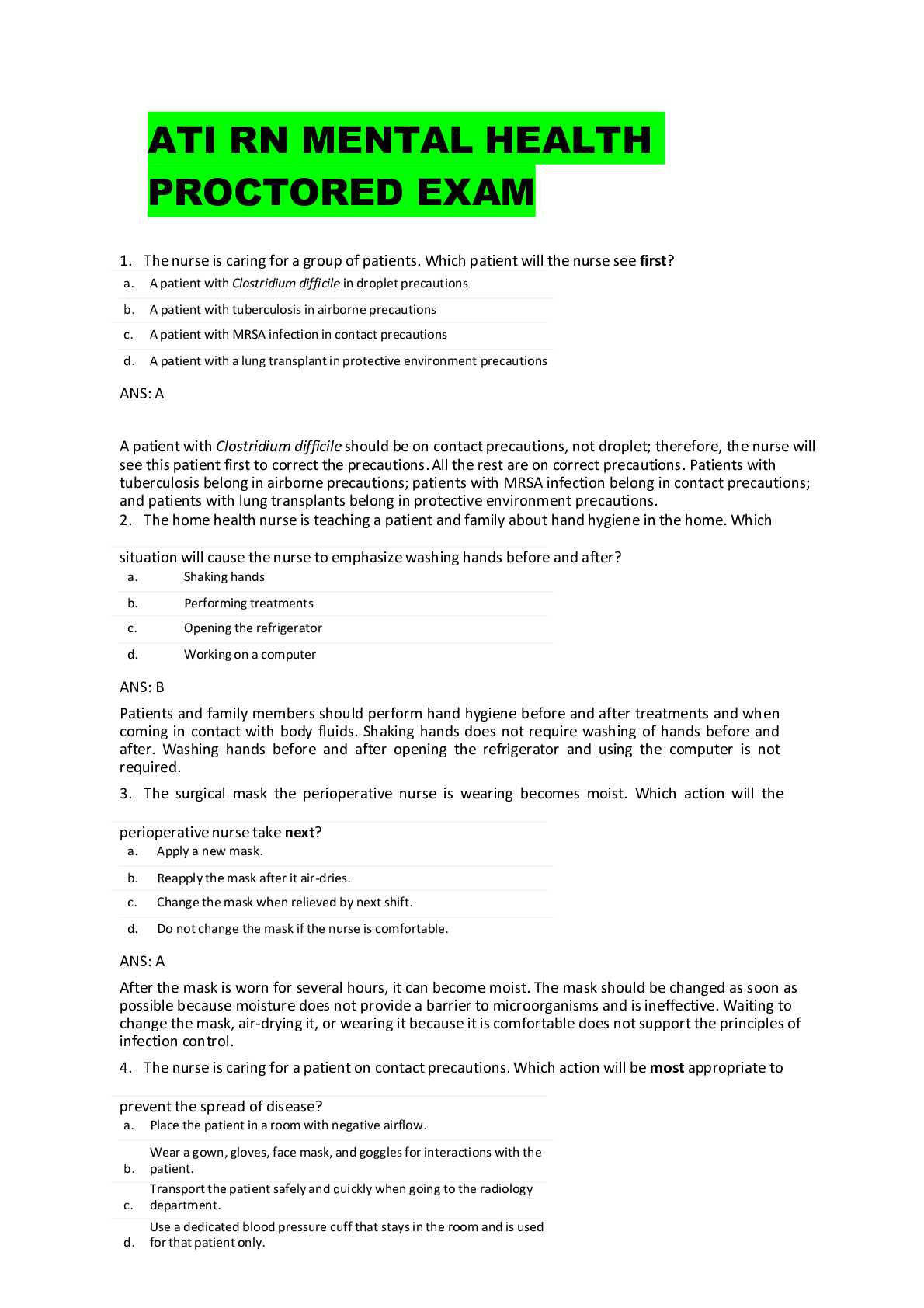
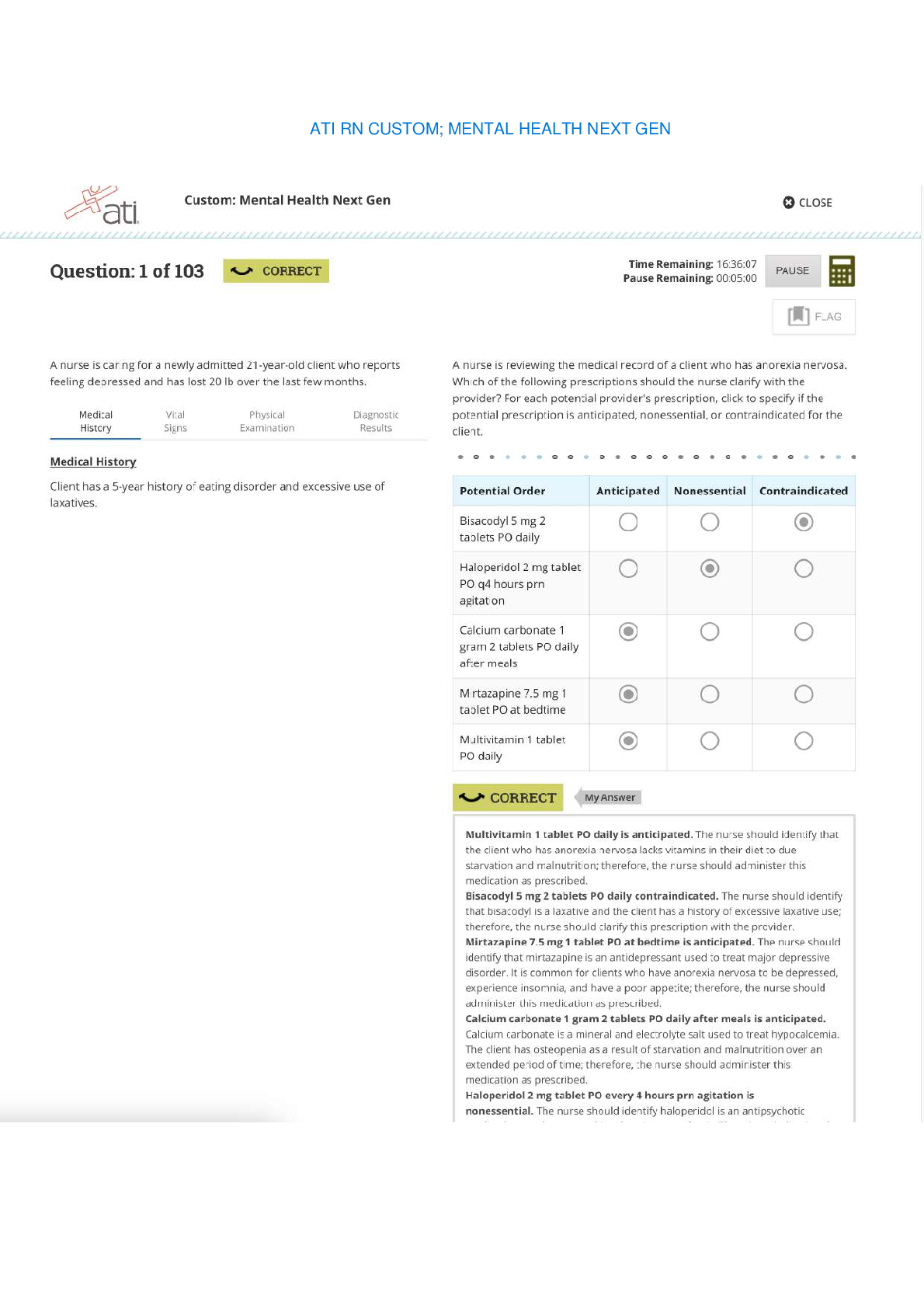
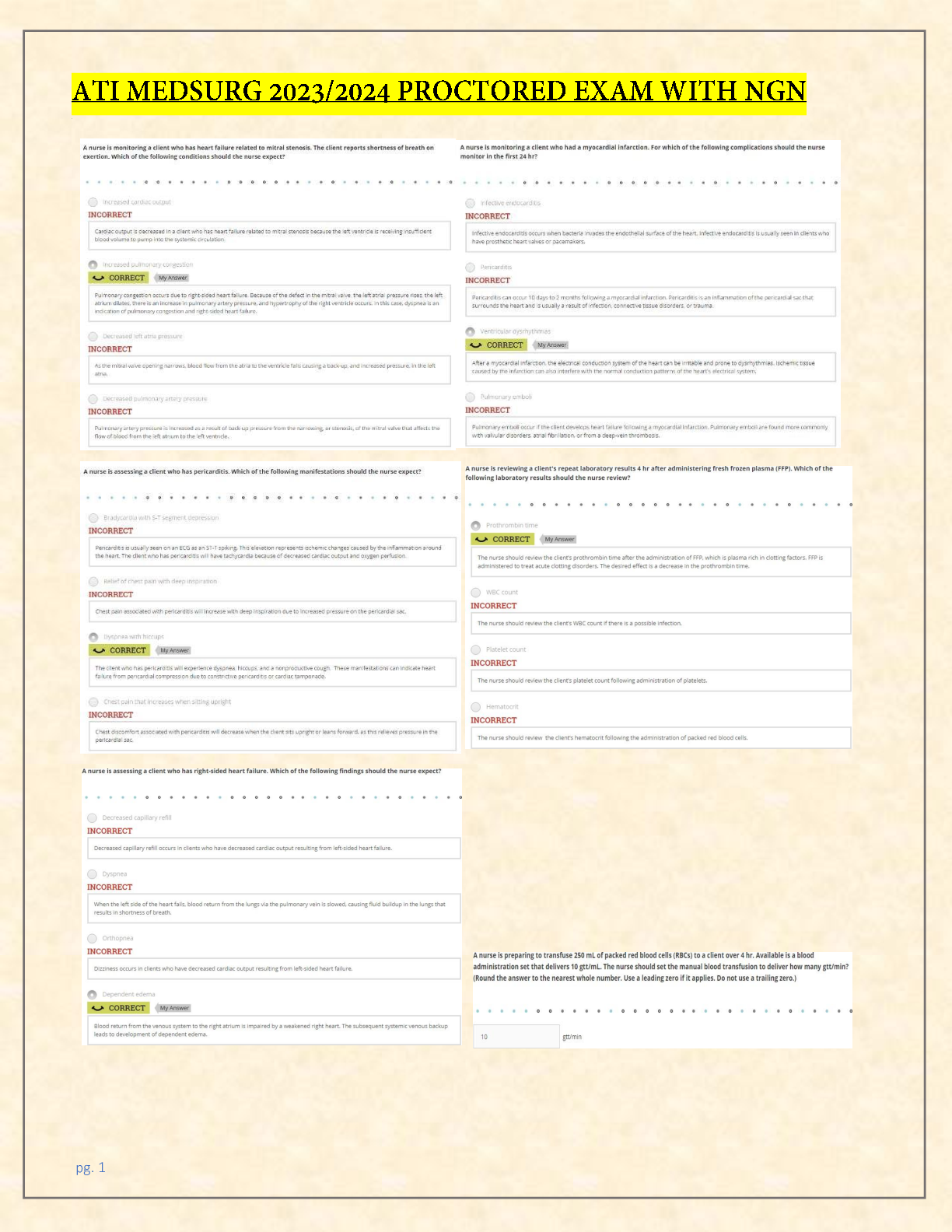
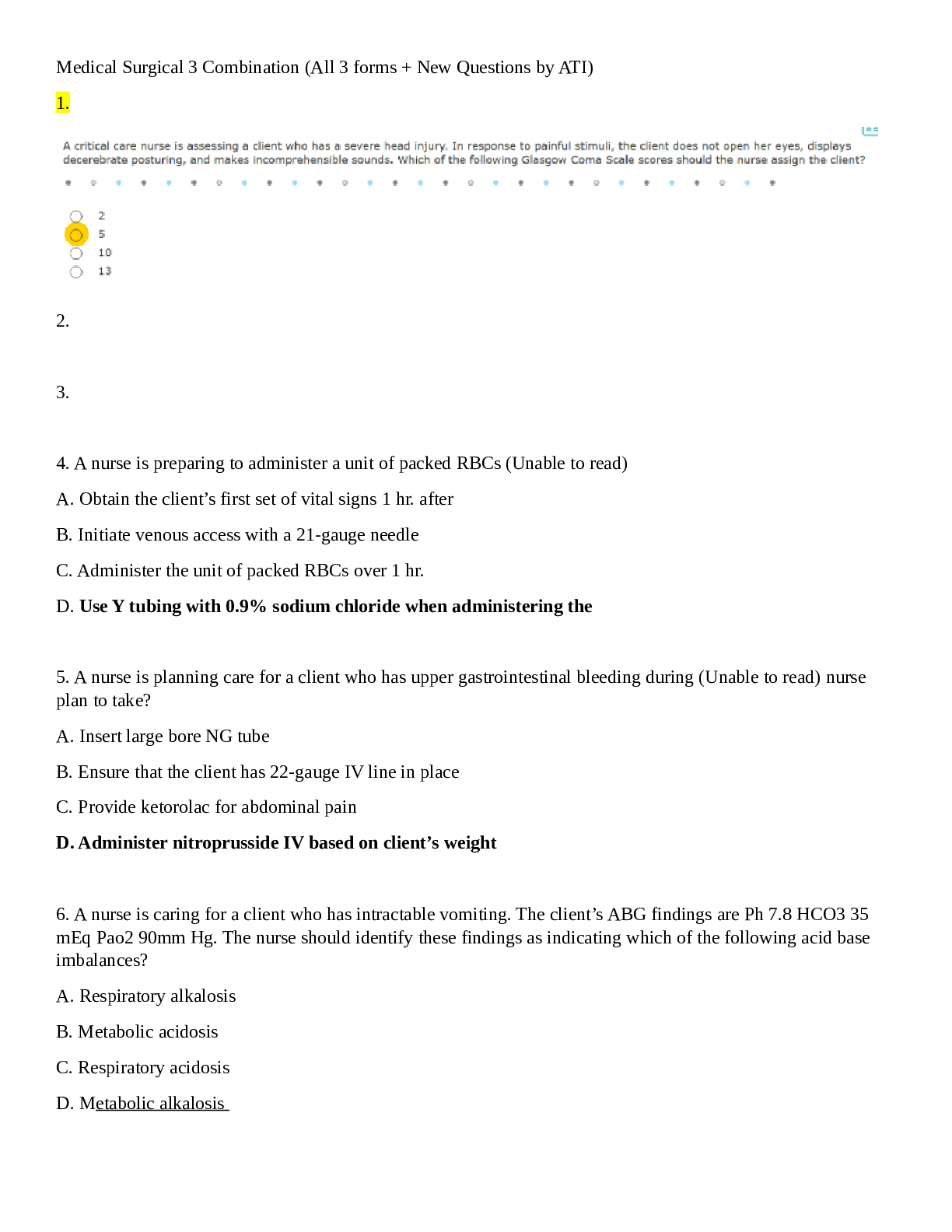
 – Chamberlain College of Nursing.png)


